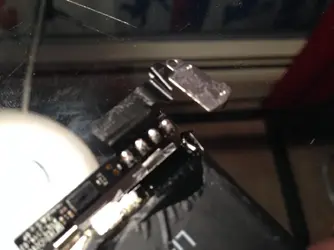matthew2926
New Member
- Joined
- Jan 4, 2014
- Messages
- 13
- Reaction score
- 0
I was reading on another site how some guy managed to wire together 2 iPhone 4/4S (not sure which) batteries together in order to give his phone double battery life. After reading up on circuits and similar things, I understand that the 2 batteries would have needed to be wired in parallel in order to increase the mAh while leaving the voltage the same. I was just wondering is anyone has tried this before or if anyone knows something about this. After opening up an iPhone 4 battery, I am pretty sure that all I would need to do is remove the connector on the second battery then use wires to connect the nodes from the battery without the connector to the battery with the connector. Basically, I would be soldering wires connecting the same nodes from another battery to the nodes that you can see in the picture. What do you guys think? Will this work? I'm pretty sure that it would but maybe I am missing something.


